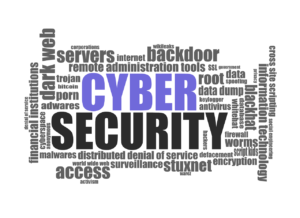Wireless Encryption and Authentication for CCNA
Wireless networks have become an integral part of modern communication infrastructure, and security is a crucial component of any wireless network. Wireless networks are inherently vulnerable to security threats, and it is essential to have proper security configurations and protocols in place to protect the network from unauthorized access and data theft. In this post, we will discuss wireless encryption and authentication for CCNA candidates and what they must understand before taking the CCNA exam.
Wireless Security Configurations
Service Set Identifier (SSID)
The SSID is a unique name given to a wireless network. It identifies the wireless network to the devices that are trying to connect to it. The SSID can be broadcasted or hidden, but hiding the SSID does not provide any significant security benefits. Hiding the SSID may make it more challenging for unauthorized users to find the network, but it does not provide any real security since tools are widely available that can easily detect hidden SSIDs.
Wi-Fi Protected Access (WPA) and Wi-Fi Protected Access II (WPA2)
WPA and WPA2 are wireless security protocols designed to improve the security of wireless networks. WPA uses Temporal Key Integrity Protocol (TKIP) for encryption, while WPA2 uses Advanced Encryption Standard (AES) for encryption. WPA2 is the more secure of the two protocols and is recommended for all wireless networks. When configuring WPA or WPA2, it is important to use a strong pre-shared key (PSK) or passphrase. A strong PSK should be at least 20 characters long and include a mix of upper and lowercase letters, numbers, and special characters.
Encryption
Encryption is the process of converting data into a secret code to protect it from unauthorized access. WPA and WPA2 use encryption to secure wireless networks. AES is the recommended encryption algorithm for WPA2, as it is more secure than TKIP. When configuring wireless encryption, it is important to use a strong encryption key. A strong encryption key should be at least 128 bits long and include a mix of upper and lowercase letters, numbers, and special characters.
Authentication
Authentication is the process of verifying the identity of a user or device. There are two types of authentication: Open System Authentication and Shared Key Authentication. Open System Authentication allows any device to connect to the network without any authentication, while Shared Key Authentication requires a password or a shared secret key to authenticate the device. Shared Key Authentication is not recommended since it is vulnerable to dictionary attacks.
Wireless Security Protocols
Wired Equivalent Privacy (WEP)
WEP is the oldest wireless security protocol and is no longer recommended due to its vulnerabilities. WEP uses a shared secret key to encrypt data transmitted over the wireless network. In additional, WEP has been shown to be easily cracked, making it an ineffective security protocol. WEP should be avoided at all costs, and wireless networks should be configured to use WPA or WPA2.
Wi-Fi Protected Access (WPA) and Wi-Fi Protected Access II (WPA2)
WPA and WPA2 are wireless security protocols designed to improve the security of wireless networks. WPA uses Temporal Key Integrity Protocol (TKIP) for encryption, while WPA2 uses Advanced Encryption Standard (AES) for encryption. WPA2 is the more secure of the two protocols and is recommended for all wireless networks. When configuring WPA or WPA2, it is important to use a strong pre-shared key (PSK) or passphrase.
802.1X/EAP
802.1X/EAP is a wireless security protocol that provides authentication and encryption for wireless networks. It uses a combination of EAP authentication and AES encryption to secure wireless networks. 802.1X/EAP is commonly used in enterprise wireless networks. When configuring 802.1X/EAP, it is important to use a strong EAP type and a strong EAP authentication method. EAP-TLS (Transport Layer Security) is considered the most secure EAP type.
Extensible Authentication Protocol (EAP)
EAP is an authentication protocol used in wireless networks that allows for a variety of authentication methods, such as password-based, certificate-based, or token-based authentication. In addition, EAP is commonly used with 802.1X to provide secure authentication for wireless networks. EAP is more secure than WEP, but less secure than WPA2.
RADIUS (Remote Authentication Dial-In User Service)
RADIUS is a network protocol used for AAA (Authentication, Authorization, and Accounting) services. It is commonly used in enterprise wireless networks to provide centralized authentication and accounting services for wireless clients. When configuring RADIUS, it is important to use a strong shared secret key and to ensure that the RADIUS server is properly secured.
Captive Portal
A captive portal is a web page that requires users to authenticate or agree to terms and conditions before being granted access to the wireless network. Captive portals are commonly used in public Wi-Fi hotspots, such as coffee shops or airports. When configuring a captive portal, it is important to ensure that the authentication method is secure and that the terms and conditions are clearly communicated to the user.
Summary
A CCNA candidate must understand the various wireless security configurations and protocols, such as SSID, WPA/WPA2, encryption, authentication, 802.1X/EAP, RADIUS, and captive portals, before taking the CCNA exam. They must also understand the vulnerabilities associated with older wireless security protocols, such as WEP, and the importance of using strong passwords and encryption keys to secure wireless networks. By understanding these concepts, a CCNA candidate will be well-equipped to configure and secure wireless networks using Cisco devices.


Leave a Reply